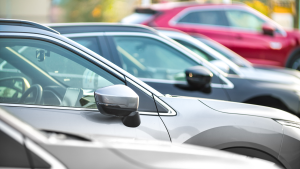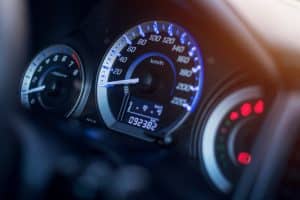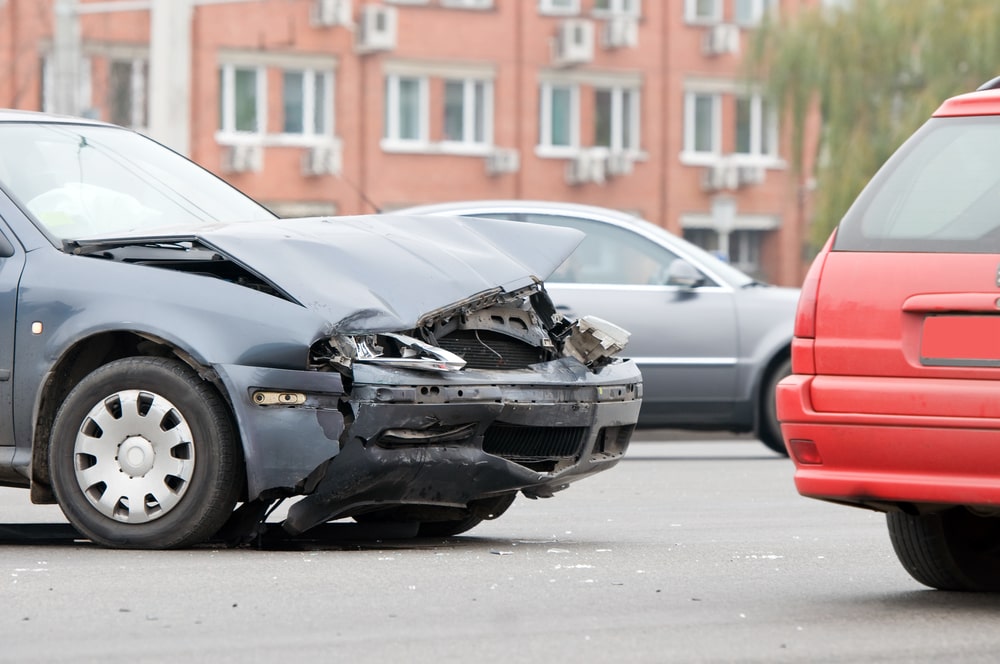
- The Savvy Promise
At Savvy, our mission is to empower you to make informed financial choices. While we maintain stringent editorial standards, this article may include mentions of products offered by our partners. Here’s how we generate income.
In this article
When it comes to buying a vehicle, one of the key areas to consider is safety. Purchasing a car with a range of safety features can bring greater peace of mind on the roads, so it’s worth knowing what these are and how they work. You can find out all about them right here with Savvy, from classic car features to modern advances in safety technology. Learn more with us today!
Adaptive Cruise Control (ACC)
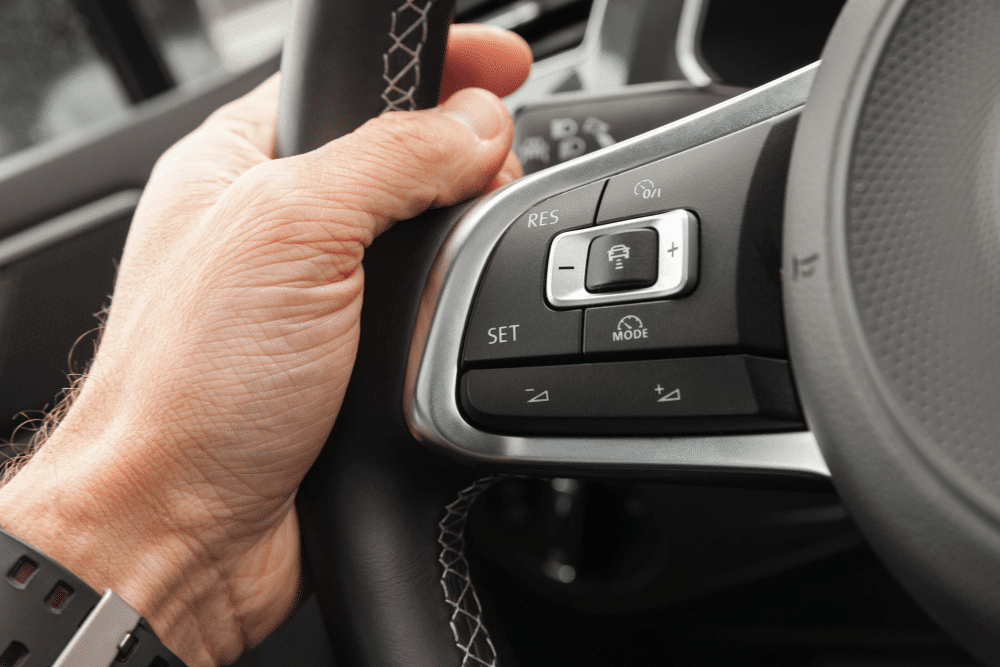
Adaptive Cruise Control (ACC) is a sophisticated driver-assistance technology that automates maintaining a safe distance from the car in front of you. It elevates regular cruise control by incorporating features that adapt to changing traffic conditions. Here's how it works:
- Sensors: ACC relies on radar, cameras or a combination of both to constantly monitor the distance and speed of the vehicle ahead.
- Manual adjustments: you’ll be able to set the driving speed for your car with ACC, as well as your preferred following distance for vehicles ahead of you.
- Automatic adjustments: based on the sensor data, the system automatically adjusts your car's speed. If the leading vehicle slows down or your car catches up, the ACC decreases your speed to maintain the pre-set distance. Conversely, if traffic clears, the system can accelerate your car back to your desired cruising speed.
This technology offers several advantages, including reduced driver fatigue and improving the overall safety of your vehicle. It's important to note that ACC is an assistance system, not a replacement for safe and attentive driving. Drivers must remain alert and prepared to take manual control whenever necessary.
Airbags
Airbags are rapid-inflating cushions embedded within the interior of a vehicle that act as a crucial safety measure in the event of a collision. There’s no specific number of airbags required in a car in Australia, but they can be installed in a range of places, including:
- Steering wheel
- Front passenger seat dashboard
- Underneath the dashboard for driver and front passenger (for knee protection)
- Left and right side of the vehicle
- Footwell
- Roof sill
During a crash, sensors detect the sudden deceleration and trigger the deployment of airbags. An explosive charge ignites within the airbag module, causing rapid inflation. This creates a soft yet firm barrier between the vehicle occupants and the hard interior components, absorbing the force of the impact and mitigating potential injuries, before deflating as pressure is applied.
Airbags are credited with having a significant impact on driver safety. According to a 2015 report by the Bureau of Infrastructure, Transport and Regional Economics (BITRE), frontal airbags are estimated to have reduced fatalities in light vehicle crashes by 13%, while side airbags reduced fatalities by an estimated 4%.
Anti-Lock Braking System (ABS)
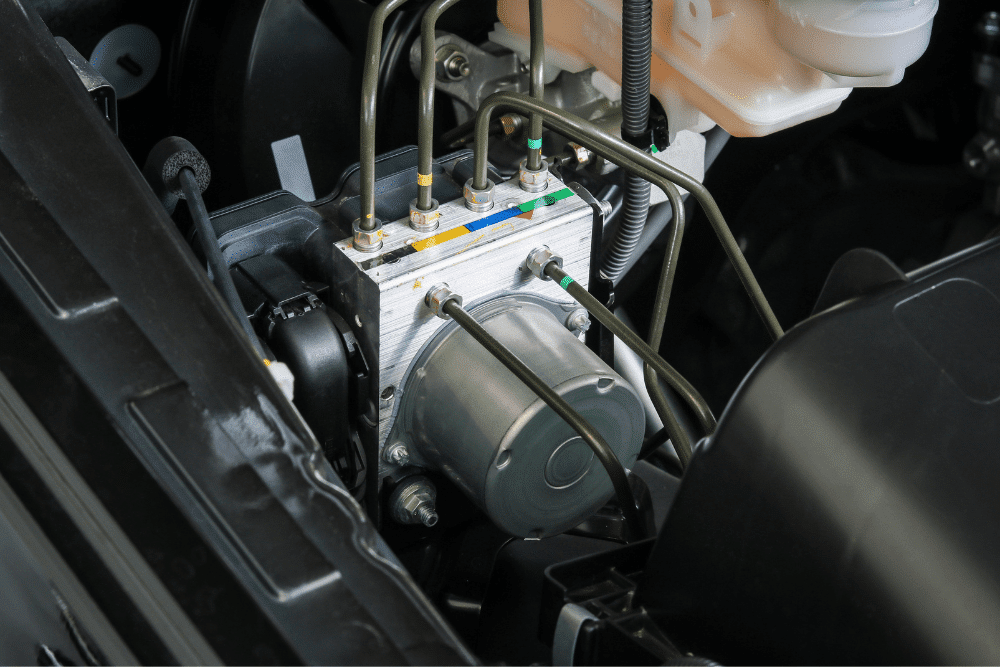
An Anti-Lock Braking System (ABS) is a safety feature in vehicles designed to prevent wheels from locking up during braking, helping drivers maintain steering control when braking heavily and/or braking in slippery conditions. It works by continuously monitoring the speed of each wheel using sensors.
When the system detects that a wheel is about to lock up, it momentarily reduces brake pressure on that wheel, allowing it to regain traction. This process is repeated rapidly, ensuring that the wheels keep rotating and preventing skidding.
If a wheel is on the verge of locking up, pressure is momentarily released on the brakes, effectively causing them to pulse or shudder. This prevents the wheel from completely stopping and sliding, maintaining traction with the road surface.
Autonomous Emergency Braking (AEB)
Autonomous Emergency Braking (AEB) is a technological feature designed to automatically apply brakes in situations where a collision is imminent. This advanced driver-assistance system acts as an extra layer of protection, potentially preventing accidents or mitigating their severity.
AEB relies on various sensors like radar, cameras or a combination of both to constantly monitor the road ahead. These sensors track the distance and relative speed of vehicles or obstacles in your path. If it detects a high risk of collision, it triggers automatic braking without any driver input. In some cases, the system might also sound audible warnings to alert the driver of the impending danger.
AEB reacts significantly faster than human reflexes, potentially applying brakes in milliseconds and preventing collisions that drivers might miss or be too slow to react to. Even if a collision is unavoidable, AEB can automatically apply braking force, potentially reducing the speed of impact and lessening the severity of the crash.
Studies have shown that AEB can significantly improve on-road safety. A report by the Monash University Accident Research Centre from 2020 projected that if “all light passenger vehicles in narrowly, broadly and pedestrian-sensitive crashed vehicles in Australia were models where some variants had AEB fitted”, decreases would be seen across fatalities (8%) and major and minor injuries (both 12%).
Blind Spot Monitoring (BSM)
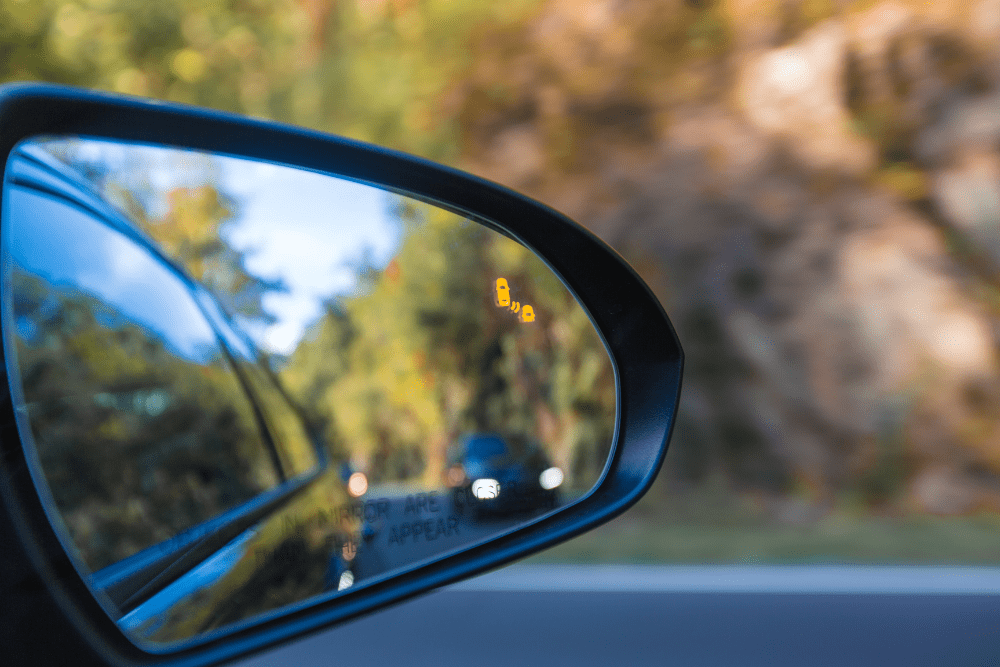
Blind Spot Monitoring (BSM) is a safety feature in vehicles designed to alert drivers of vehicles or objects in their blind spots, which are areas not easily visible through mirrors. It typically utilises sensors or cameras mounted on the vehicle's exterior to monitor adjacent lanes and alert the driver of a potential hazard.
The sensors or cameras used in blind spot monitoring systems continuously scan the areas either side of, and behind, your car. If they detect another vehicle in the blind spot, the system activates the warning alert, which may be a sound or light on your dashboard or wing mirrors.
In terms of the safety benefit for drivers, the Transport Accident Commission’s (TAC) howsafeisyourcar? site states that blind spot warning systems have been estimated to have reduced crashes resulting from lane changes by 14%.
Digital mirrors
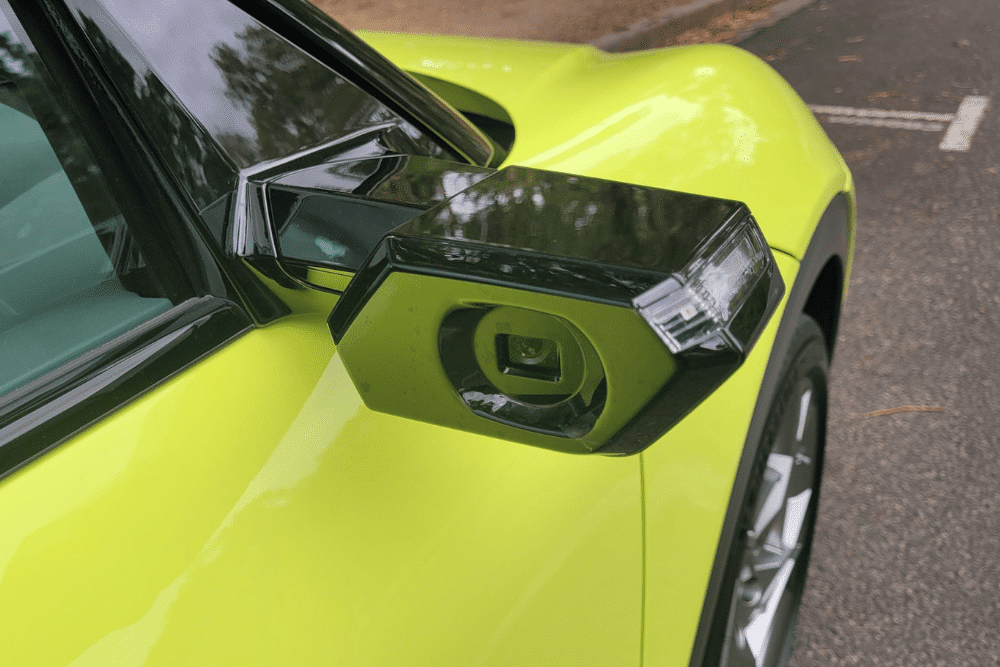
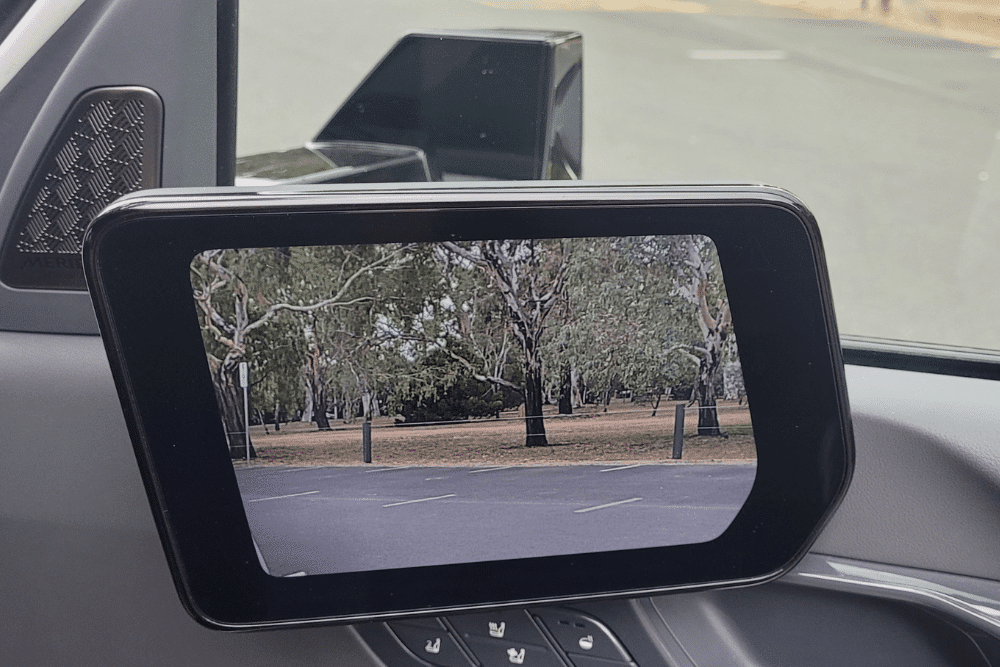
A feature becoming increasingly common in EVs such as the Genesis GV60 and Kia EV9 is digital wing mirrors. These cars have replaced their wing mirrors with cameras, installing a display on each side of the dashboard to give you a live feed of what's around you.
Having these on your vehicle can provide a more accurate indication of the distance between your car and those behind you when changing lanes. Additionally, they can improve visibility, especially in less clear conditions such as darkness.
Electronic Stability Control (ESC)
Electronic Stability Control (ESC), also known as Electronic Stability Program (ESP) or Dynamic Stability Control (DSC), is a feature that aids drivers in maintaining control of their vehicle if it stops responding appropriately to their steering.
The system relies on a network of sensors that constantly monitor the vehicle's dynamics, including steering wheel angle and wheel speed. This network feeds data into a central control unit. The system continuously analyses this data to assess if the car's actual trajectory aligns with the driver's steering inputs.
When a discrepancy arises, indicating a potential loss of control, the ESC system can selectively apply brakes to individual wheels. This targeted braking helps to counter the skid and bring the vehicle back in line with the driver's steering input.
By constantly monitoring vehicle behaviour and intervening with corrective measures like braking and engine power adjustments, ESC significantly enhances a driver's ability to manoeuvre the car safely. Indeed, the BITRE study mentioned earlier credited ESC with reducing light vehicle fatalities by 6%.
Forward Collision Warning (FCW) and Rear Collision Warning (RCW)
Forward Collision Warning (FCW) is a safety feature in vehicles designed to alert drivers of imminent collisions with vehicles or objects in front of them. It typically uses sensors or cameras to monitor the distance and relative speed of vehicles ahead. When the system detects a potential collision, it alerts the driver through visual or audible warnings, prompting them to take evasive action to avoid or mitigate the impact.
Similarly, Rear Collision Warning (RCW) is a safety feature that alerts drivers of vehicles approaching from behind, helping to prevent rear-end collisions or those caused when reversing. Like FCW, RCW uses sensors to monitor the distance and relative speed of vehicles behind and alert the driver of potential collisions before they happen.
Both FCW and RCW contribute to safer driving by providing drivers with advanced warning and increased awareness of potential collision hazards, giving them more time to react and avoid accidents.
Lane Departure Warning (LDW) and Lane Keep Assist (LKA)
Lane Departure Warning (LDW) is a safety feature in vehicles that alerts drivers when they unintentionally drift out of their lane without signalling. It typically uses cameras or sensors to monitor the vehicle's position relative to lane markings on the road.
When the system detects that the vehicle is drifting out of its lane, it triggers visual or audible warnings to alert the driver, prompting them to correct their course.
Lane Keep Assist (LKA) is an advanced safety feature that goes a step further than LDW by actively helping drivers maintain their lane position. Using similar or the same sensors or cameras as LDW, LKA can gently steer the vehicle back into its lane if the driver fails to respond to the LDW alerts, helping prevent unintentional lane departures.
These technologies work together to lower the risk of lane departure-related accidents, providing drivers with both warnings and assistance to help them stay safely within their lane.
Reversing cameras
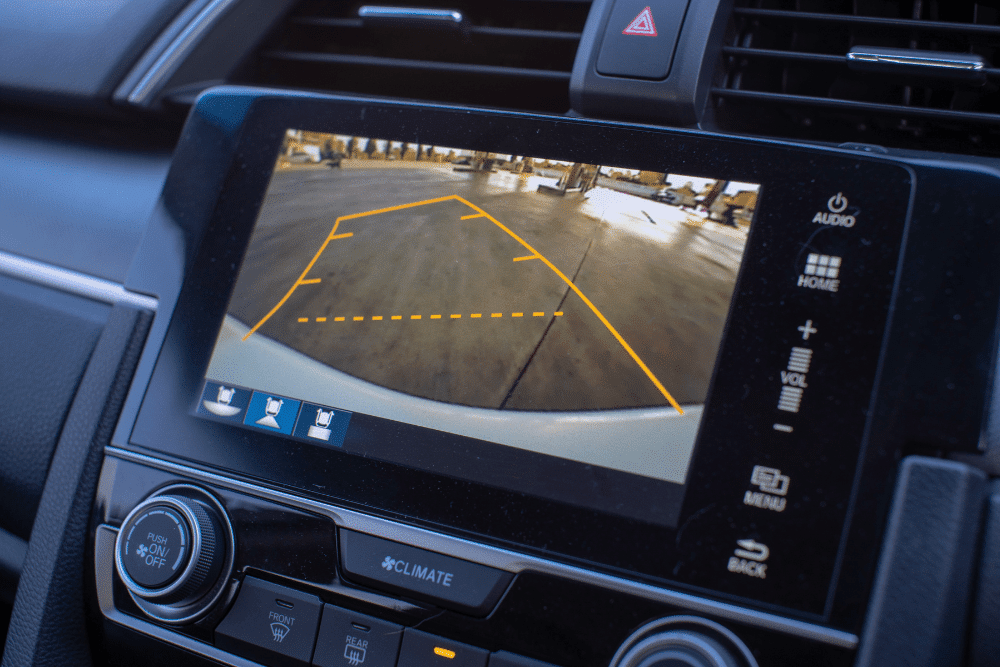
A common and popular safety feature included among the best modern family cars is the reversing camera. By installing a screen on the dashboard, you can gain a clearer view of what’s behind your car while reversing. This can help you spot people, vehicles, objects or obstacles you might not have seen in your mirrors or from turning around.
Coupled with safety features such as RCW, a reversing camera can significantly reduce your chances of an accident. According to howsafeisyourcar?, reversing cameras and sensors can cut down pedestrian crashes by as much as 41%.
Additionally, utilising a reversing camera when reverse parking or manoeuvring out of a tight spot increases your field of view, providing more information as to the distance of other obstacles to help you avoid them.
If you’re in the market for a new car with some (or all) of the above passive and active safety features, you can compare a range of car loans and other finance options through Savvy today.
Seatbelts
Seatbelts are safety restraints designed to keep occupants securely positioned in their seats during a collision. They consist of a three-point harness system:
- Lap belt: this strap sits low across the hips, restraining the lower body and preventing the occupant from being thrown forward during an impact.
- Shoulder belt: this strap extends diagonally across the chest, distributing the force of a crash over a wider area and reducing the risk of chest and neck injuries.
- Retractor: a built-in mechanism allows the belt to automatically adjust and maintain slight tension while offering some freedom of movement.
In the event of a crash, the webbing locks and tightens around the occupant's body, absorbing the impact and preventing them from being ejected from the vehicle or thrown against the car's interior. This significantly reduces the risk of severe injuries or fatalities during an accident.
Wearing a seatbelt while travelling in a car is required by law across Australia. However, a report by the Queensland University of Technology (QUT) and Motor Accident Insurance Commission (MAIC) found that in 2015, 177 drivers or passengers were killed on the road while not wearing a seatbelt, equating to around 15% of all national fatalities that year.
Structural design (crumple zones)
Crumple zones are engineered sections within a vehicle's structure designed to absorb the impact energy during a collision, located at the front and rear ends of the car. As the name suggests, upon impact, these zones are designed to deform and compress in a controlled manner.
This controlled crumpling absorbs a significant portion of the crash energy, helping prevent it from directly transferring to the passenger compartment. They’re designed to act as buffers that collapse to lessen the impact on the vehicle's occupants.
By absorbing the force of the collision, crumple zones help to safeguard the integrity of the passenger cabin, minimising the risk of serious injury to those inside the vehicle. This crucial feature works in conjunction with other passive safety elements to provide a comprehensive layer of protection for you and your passengers, including children, in the unfortunate event of an accident.
How to check the safety of your car
There are many ways you can go about checking your car's safety, such as the features on offer and its overall rating compared to other models. These include:
- ANCAP: the Australasian New Car Assessment Program, known as ANCAP, grades car models on a five-star scale based on the level of safety they offer drivers. ANCAP is considered the most reputable source in Australia for safety assessments.
- howsafeisyourcar?: this database is run by the Transport Accident Commission of Victoria. It also grades cars based on safety, as well as listing their safety features, price guide and whether any restrictions apply to P-platers.
- Check the vehicle specifications: you should also conduct checks yourself to see which safety features are included before purchasing your car. With this, you can compare different models to find one which suits your needs.
Did you find this page helpful?
Author
Thomas PerrottaReviewer
Bill TsouvalasPublished on November 19th, 2020
Last updated on April 23rd, 2024
Fact checked
This guide provides general information and does not consider your individual needs, finances or objectives. We do not make any recommendation or suggestion about which product is best for you based on your specific situation and we do not compare all companies in the market, or all products offered by all companies. It’s always important to consider whether professional financial, legal or taxation advice is appropriate for you before choosing or purchasing a financial product.
The content on our website is produced by experts in the field of finance and reviewed as part of our editorial guidelines. We endeavour to keep all information across our site updated with accurate information.
Approval for car loans is always subject to our lender’s terms, conditions and qualification criteria. Lenders will undertake a credit check in line with responsible lending obligations to help determine whether you’re in a position to take on the loan you’re applying for.
The interest rate, comparison rate, fees and monthly repayments will depend on factors specific to your profile, such as your financial situation, as well others, such as the loan’s size and your chosen repayment term. Costs such as broker fees, redraw fees or early repayment fees, and cost savings such as fee waivers, aren’t included in the comparison rate but may influence the cost of the loan. Different terms, fees or other loan amounts may result in a different comparison rate.

